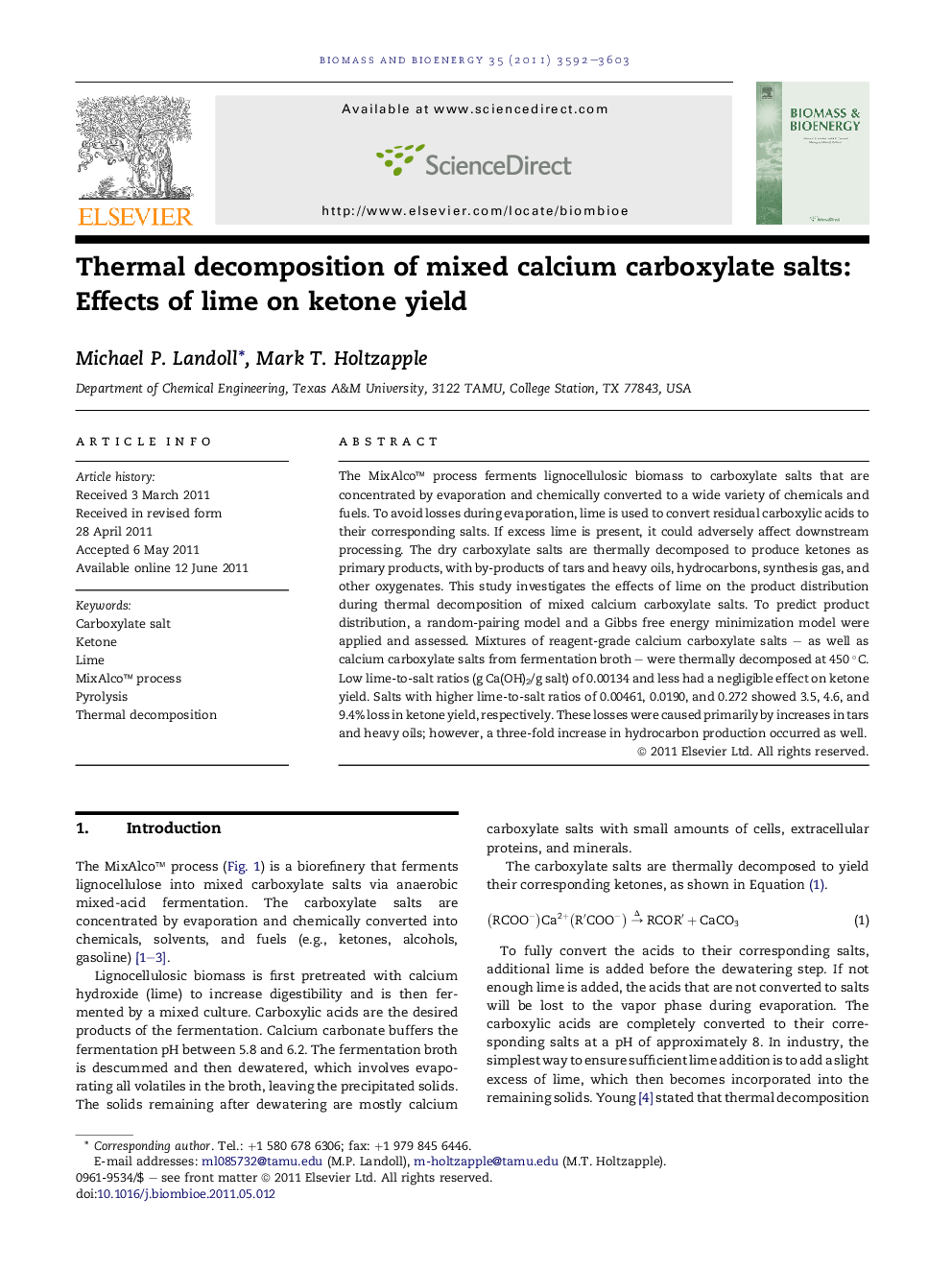| کد مقاله | کد نشریه | سال انتشار | مقاله انگلیسی | نسخه تمام متن |
|---|---|---|---|---|
| 678036 | 888628 | 2011 | 12 صفحه PDF | دانلود رایگان |

The MixAlco™ process ferments lignocellulosic biomass to carboxylate salts that are concentrated by evaporation and chemically converted to a wide variety of chemicals and fuels. To avoid losses during evaporation, lime is used to convert residual carboxylic acids to their corresponding salts. If excess lime is present, it could adversely affect downstream processing. The dry carboxylate salts are thermally decomposed to produce ketones as primary products, with by-products of tars and heavy oils, hydrocarbons, synthesis gas, and other oxygenates. This study investigates the effects of lime on the product distribution during thermal decomposition of mixed calcium carboxylate salts. To predict product distribution, a random-pairing model and a Gibbs free energy minimization model were applied and assessed. Mixtures of reagent-grade calcium carboxylate salts – as well as calcium carboxylate salts from fermentation broth – were thermally decomposed at 450 °C. Low lime-to-salt ratios (g Ca(OH)2/g salt) of 0.00134 and less had a negligible effect on ketone yield. Salts with higher lime-to-salt ratios of 0.00461, 0.0190, and 0.272 showed 3.5, 4.6, and 9.4% loss in ketone yield, respectively. These losses were caused primarily by increases in tars and heavy oils; however, a three-fold increase in hydrocarbon production occurred as well.
► Calcium carboxylate salts thermally decompose to ketones with high selectivity.
► Calcium carboxylate salts from fermentation broth thermally decompose to ketones.
► High amounts of lime in calcium carboxylate salts reduce ketone yields.
► Reduced yields are caused by an increase of tars and heavy oils and hydrocarbons.
► Two different models that approximate product composition are compared.
Journal: Biomass and Bioenergy - Volume 35, Issue 8, August 2011, Pages 3592–3603